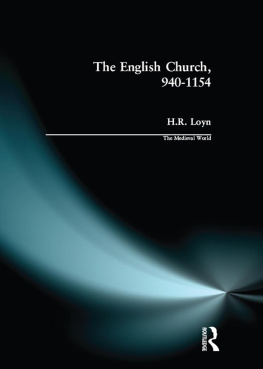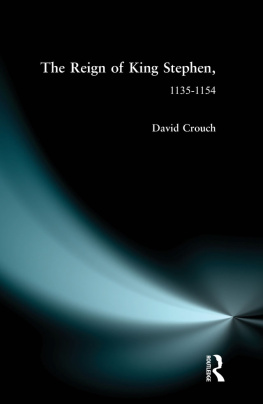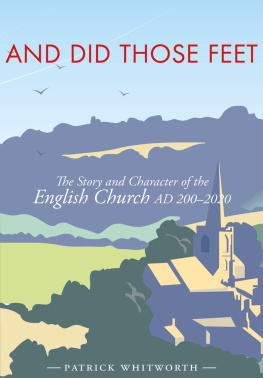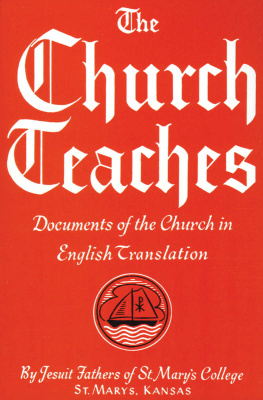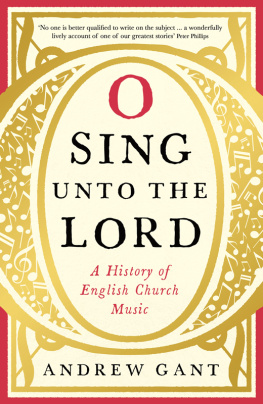First published 2000 by Pearson Education Limited
Published 2013 by Routledge
2 Park Square, Milton Park, Abingdon, Oxon OX14 4RN
711 Third Avenue, New York, NY 10017, USA
Routledge is an imprint of the Taylor & Francis Group, an informa business
Copyright 2000, Taylor & Francis.
The right of H.R. Loyn to be identified as author of this Work has been asserted by him in accordance with the Copyright, Designs and Patents Act 1988.
All rights reserved. No part of this book may be reprinted or reproduced or utilised in any form or by any electronic, mechanical, or other means, now known or hereafter invented, including photocopying and recording, or in any information storage or retrieval system, without permission in writing from the publishers.
Notices
Knowledge and best practice in this field are constantly changing. As new research and experience broaden our understanding, changes in research methods, professional practices, or medical treatment may become necessary.
Practitioners and researchers must always rely on their own experience and knowledge in evaluating and using any information, methods, compounds, or experiments described herein. In using such information or methods they should be mindful of their own safety and the safety of others, including parties for whom they have a professional responsibility.
To the fullest extent of the law, neither the Publisher nor the authors, contributors, or editors, assume any liability for any injury and/or damage to persons or property as a matter of products liability, negligence or otherwise, or from any use or operation of any methods, products, instructions, or ideas contained in the material herein.
ISBN 13: 978-0-582-30303-4 (pbk)
British Library Cataloguing-in-Publication Data
A catalogue record for this book is available from the British Library
Library of Congress Cataloging-in-Publication Data
Loyn, H.R. (Henry Royston)
The English church, 9401154 / H.R. Loyn.
p. cm. (The medieval world)
Includes bibliographical references and index.
ISBN 0582302889 (alk. paper) ISBN 0582303036 (pbk.: alk. paper)
1. EnglandChurch history4491066. 2. EnglandChurch history10661485. I. Title. II. Series.
BR746.L692000
274.203dc21
00021676
Typeset by 35 in 11/13pt Baskerville MT
The history of the Church in England between the early tenth century and the middle of the twelfth, like the history of the Western European Church, forms a definable unit of study. At the beginning of the period it was emerging from the most severe phase of the Viking attacks, an episode which had been particularly damaging in England, towards an organisational structure which created much of the ecclesiastical landscape of the rest of the Middle Ages. At the end, it was moving towards the more predominantly bureaucratic and legalistic institution which was characteristic of the later Middle Ages. While the extent of the physical and intellectual capital which had survived through the Viking attacks should not be under-estimated, the most important force which drove the English Church forward in the tenth century was a monastic reform which drew its inspiration from France and the Low Countries. This drive for reform was harnessed to royal power, an alliance which reached its apogee during the reign of King Edgar (95975). The greatest subsequent force for change was the late eleventh-century movement known as Gregorian Reform, with its accent on the distinctiveness and superiority of spiritual power and its quest for legal and theological authority, which played such a large part in unleashing the great movement known as the Twelfth Century Renaissance. Here, however, as throughout the period, it is as important to focus on the continuities as well as on the changes.
A distinguished authority on Anglo-Saxon England and the Norman Conquest who has written extensively on the history of the early medieval Church in England, Professor Henry Loyn brings to bear all his formidable range of knowledge on this important topic. Emphasising from the beginning that his subject can only be understood within the social and political context of the times, he sets out a story of evolutionary development, with the Church responding regularly to outside stimuli from the papacy and reform movements in Germany and France. The great political crises, the Danish conquest of Sweyn Forkbeard and Cnut and the Norman Conquest are seen as disruptive episodes, but as ultimately having relatively little effect on a history whose mainsprings were native and ecclesiastical. The office of bishop and its exercise by a large number of talented individuals is throughout placed at the centre of the story, with the bishop seen as the chief source of authority and the link between the political world of the royal court and the pastoral responsibilities of the parish priest. While giving due weight to matters of royal and clerical collaboration, Professor Loyn is also profoundly sensitive to the importance both of the Churchs life in the localities and to its inner spiritual purpose. The great figures, such as thelwold, Dunstan, Oswald, Lanfranc and Anselm have their place in the book, but it also gives due attention to the parish, pastoral work and matters of belief. The chapters on the Anglo-Norman Church convey very well a sense of the changing times and the evolving climate which led on to the Becket dispute and the stronger authoritarian papacy.
This book is a particularly welcome addition to the Medieval World series since it supplies an authoritative survey of one of the important formative periods in the history of England. Vigorously, yet sensitively written, it conveys admirably a sense of the general, of the importance of the individual to the full story, and of the place of the Church as an organisation seeking both to maintain a pastoral and spiritual role and to make sense of turbulent times. The result provides not just a history of the Church itself, but a valuable commentary on the general history of England through a period of two and a half centuries.
David Bates
My chief personal acknowledgement to be made in connection with this book is to my friend and former colleague, Professor David Bates, who first suggested that I might attempt a short general book on the fortunes of the Church over the crisis of the Norman Conquest, and for his helpful, positive editorial support. Problems, as always, proved even more complicated than expected, but it was indeed rewarding to examine the old themes of continuity and change in relation to an institution which provided plentiful evidence of change in apparent wealth and building techniques and personnel, yet maintained many powerful elements of continuity. The English Church was involved more centrally in the Latin- and Romance-speaking culture of Europe in 1154; it still remained a distinctive English Church, an ecclesia anglicana.
My debt to fellow historians will be obvious. The work of scholars of the calibre of Dom David Knowles, Sir Frank Stenton, Sir Richard Southern and Frank Barlow give an essential general base for knowledge, just as specialist studies mentioned in the bibliography such as those of Dorothy Whitelock on Wulfstan, archbishop of York (100223), or Martin Brett of the Church in the reign of Henry I help us to understand better in detail the role of the Church in society. Special mention should be made of two publications referred to in the bibliography:



